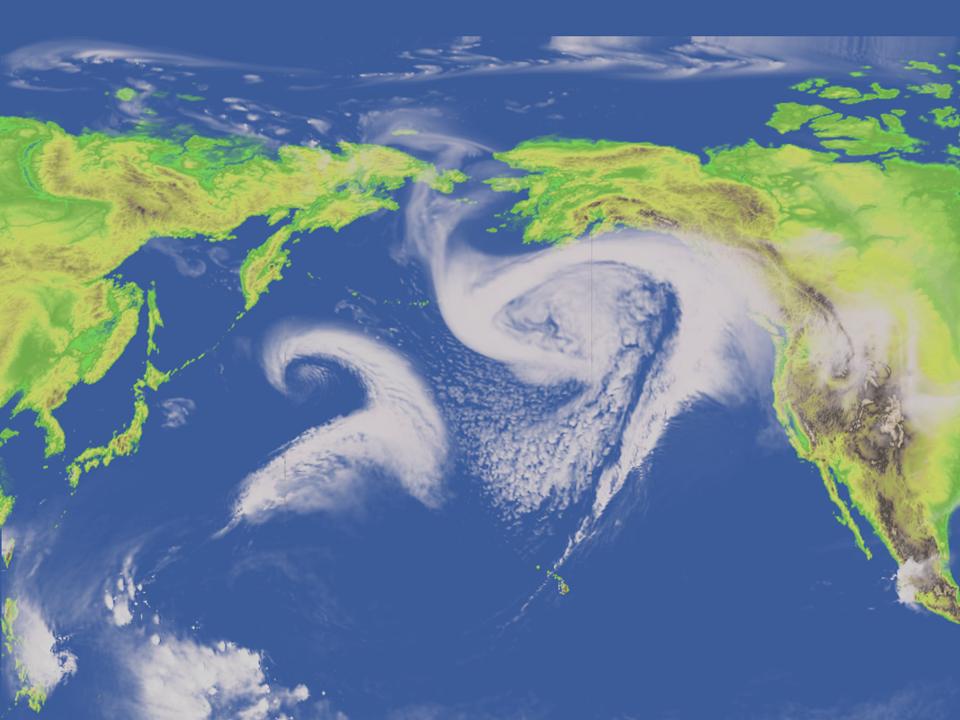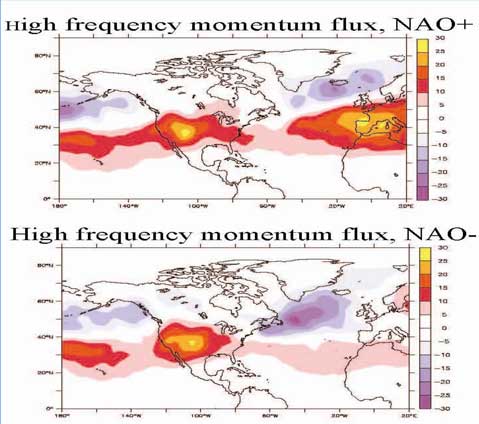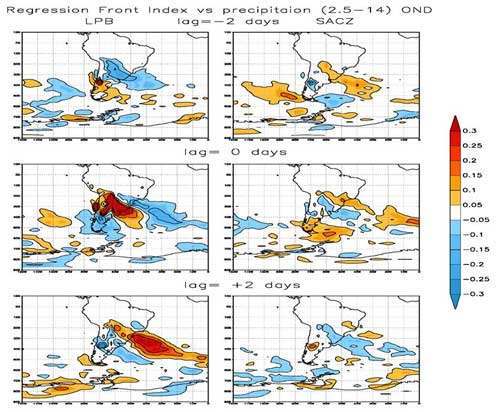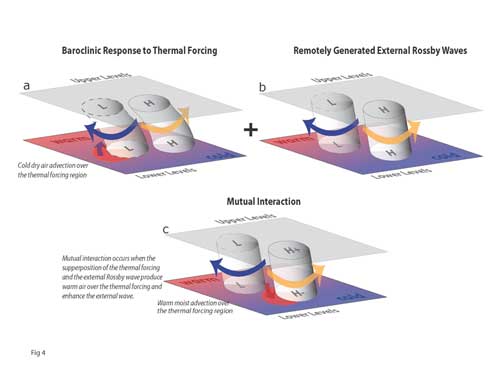Mid-Latitude Dynamics
Storm tracks Dynamics

The Rationale for why Climate Models Should Adequately Resolve the Mesoscale, I. Orlanski, 2007: High Resolution Numerical Modelling of the Atmosphere and Ocean Hamilton and Ohfuchi, New York NY, Springer 29-44).Click on the figure for animation.
High resolution Pacific Storm track
Our research has elucidated and simulated the genesis, evolution and decay of weather patterns that produce extreme events, such as blizzards, heavy precipitation, floods, cold waves, etc. For present and future climate, these extreme events are what affect most of society on a regional scale. Planning to face the threat of global warming requires detailed predictions of climate changes in different parts of the world. This will require an array of climate models, from the global to the regional scale, to explore various scenarios of change, and associated uncertainties. Our ability to simulate and understand these phenomena is critical in climate studies and to improve weather prediction.
The Role of the high Frequency eddy activity in Climate variability

The Rationale for why Climate Models Should Adequately Resolve the Mesoscale, I. Orlanski, 2007: High Resolution Numerical Modelling of the Atmosphere and Ocean Hamilton and Ohfuchi, New York NY, Springer 29-44).Click on the figure for animation.
Recent studies show a convergence of conclusions regarding the role of mid latitude baroclinic cyclones in climate. It is well known that baroclinic eddies define the storm tracks in middle latitudes of both hemispheres. This baroclinic eddy activity is the major provider of momentum, heat and moisture fluxes as well as wind stress, that shapes the general circulation of the atmosphere and oceans. In a recent study, it has been shown that the effect of the way of wavebraking could displase the zonal jet over the Atlantic ocean: north( NAO+)or south (NAO-), The figure shows how the high frequency eddies could produce northward( upper graph) or southward (lower graph) momentum fluxes responsible for such displacement.
The role of Atmospheric Fronts in organizing extra-tropical convection

The Rationale for why Climate Models Should Adequately Resolve the Mesoscale, I. Orlanski, 2007: High Resolution Numerical Modelling of the Atmosphere and Ocean Hamilton and Ohfuchi, New York NY, Springer 29-44).Click on the figure for animation.
The precipitation over the El Plata Basin (LPB) a vast region between the Amazon and the Southern part of South America, is an important source of the hydrological cycle of the continent. Precipitation over the LPB is more intense or weaker in a see-saw pattern with the precipitation over the tropical Amazon north of it (SACZ). It is clear, the precipitation over the Amazon (SACZ)is related with the seasonal excursion of the ITCZ. However, what is not clear, is what controls the precipitation over LPB. Our study involved detailed simulations over a number of years; of high and low precipitation pointed to the fact that high and low precipitation correlated very well with the frontal activities generated well into the higher latitudes of the south hemisphere. Years of more activity of frontal system coming from the South of Argentina destabilizes the moist boundary layer over the LPB area, producing intense squall lines. As more intense is the precipitation over the LPB, more surface convergence draws moisture from the subtropics reducing the precipitation over the Amazon, explaining the observed see-saw pattern.
The Mutual Interaction between Convection and the Stationary Circulation

The Rationale for why Climate Models Should Adequately Resolve the Mesoscale, I. Orlanski, 2007: High Resolution Numerical Modelling of the Atmosphere and Ocean Hamilton and Ohfuchi, New York NY, Springer 29-44).Click on the figure for animation.
We hypothesize a simple feedback mechanism between external Rossby waves and diabatic heating from convection. This mechanism could explain the large amplitude that external Rossby waves attain as they propagate to mid and high latitudes. A series of experiments has been carried out with a core dynamic global spectral model. These simulations with the idealized atmospheric GCM and a simple parameterization of thermal forcing proportional to the low-level wave meridional velocity suggest that external Rossby waves can be enhanced by convection, which they themselves induce. It is shown that in the tropospheric upper levels the amplitude of the external waves can be twice as large with feedback as for a control simulation that does not allow feedback.


